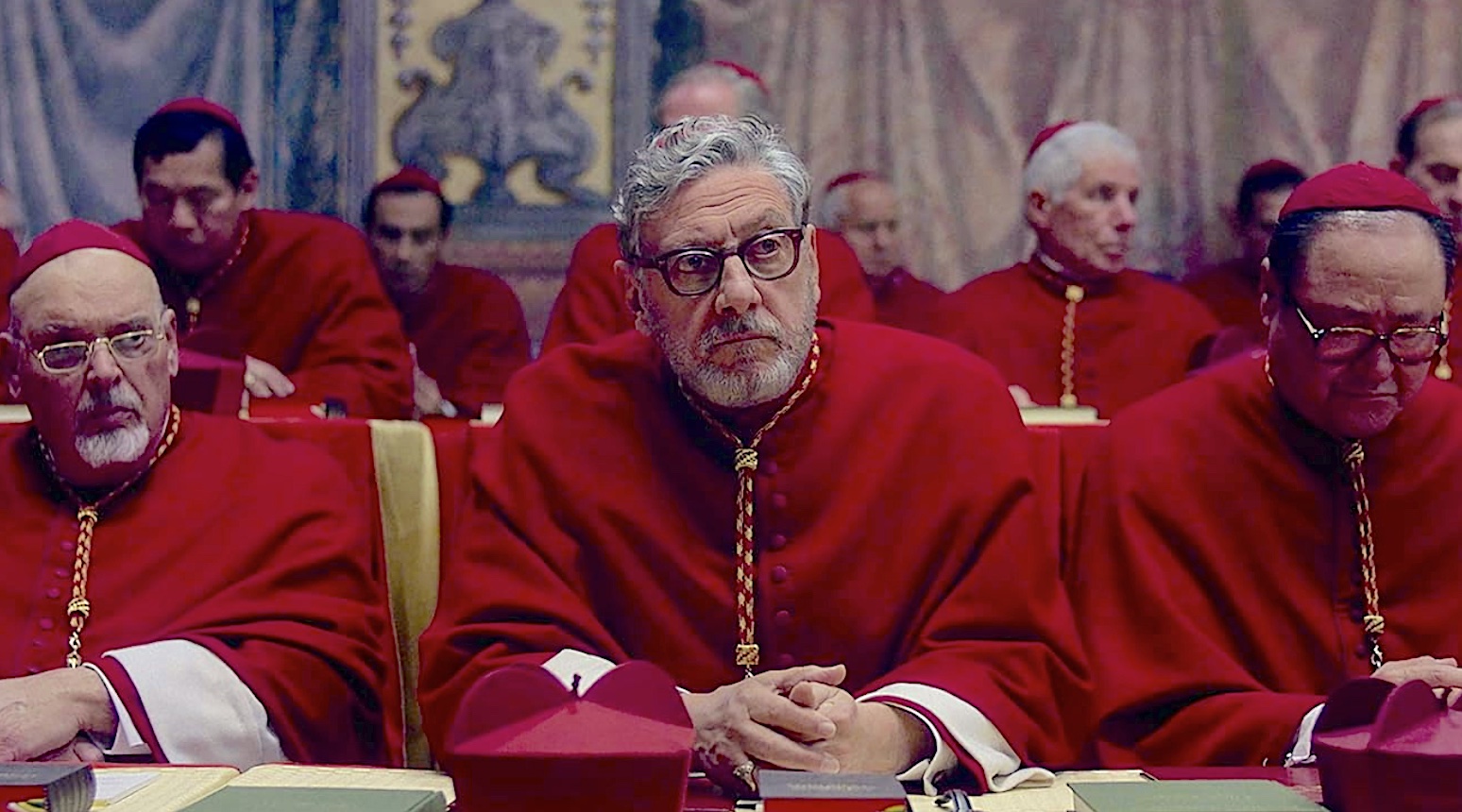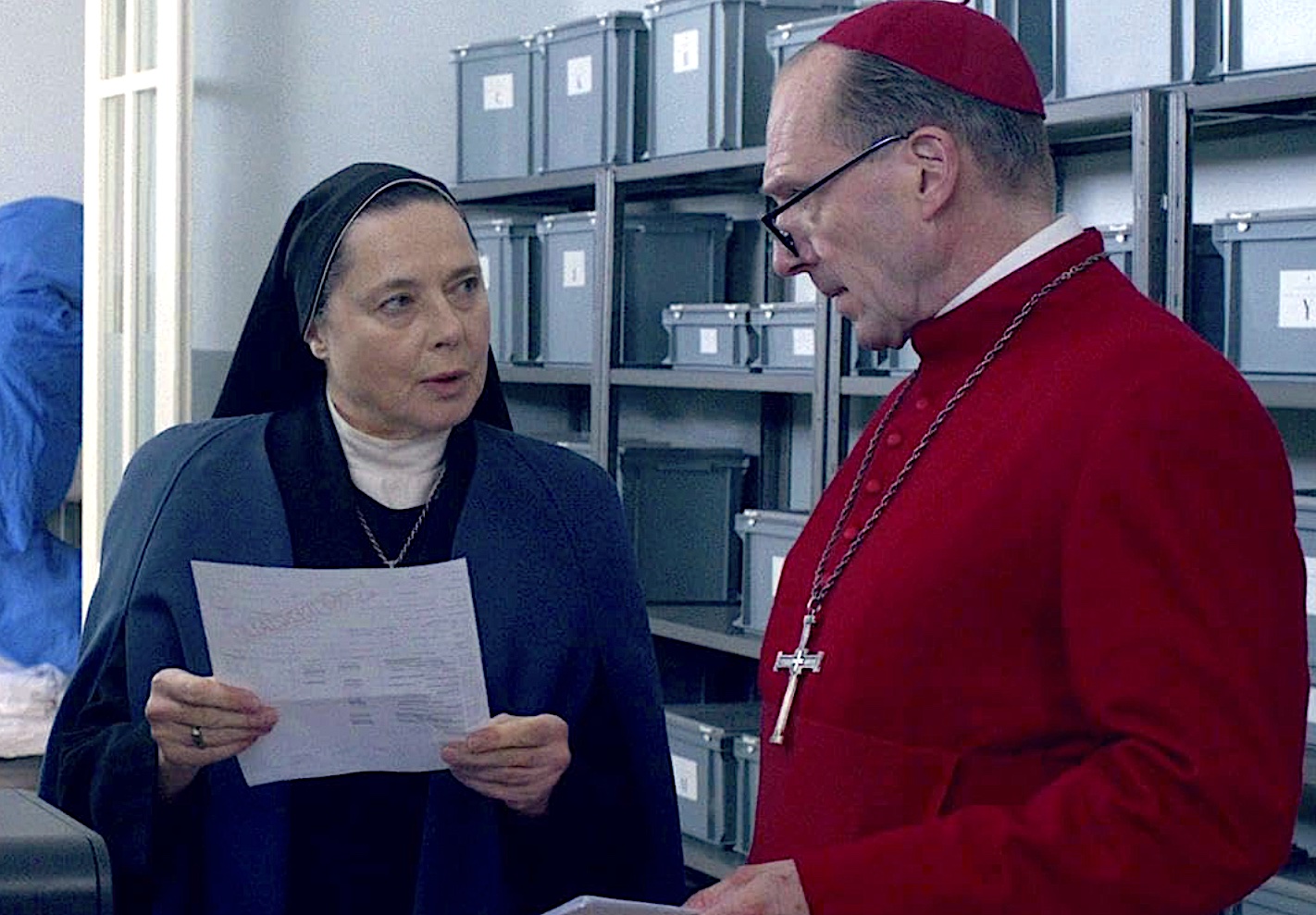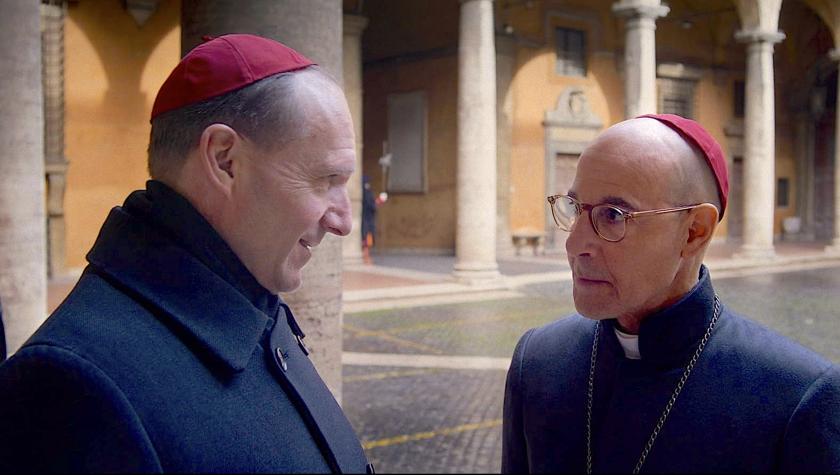“You either got faith or you got unbelief, and there ain’t no neutral ground,” as Bob Dylan sang, but Cardinal Lawrence (Ralph Fiennes) isn’t finding it quite that simple.
The Pope (Bruno Novelli) has died, and in his last act in this world he appointed Lawrence to supervise the conclave that would choose his successor. But Lawrence has been struggling with his own faith of late, and negotiating the spider’s web of politics, personalities and clandestine intrigue that infests the sepulchral corridors of the Vatican threatens to overwhelm him.
Yet he also realises that, much as he might wish for it, there can be no certainty. “If there was only certainty, and no doubt, there would be no mystery,” he ponders.“And therefore no need for faith.”
From this teasing paradox, and of course from Robert Harris’s source novel, director Edward Berger (who won an Oscar for his last feature, All Quiet on the Western Front) and screenwriter Peter Straughan have woven a beautifully crafted thriller, equal parts detective story, spiritual quest, and – very discreetly – a satire. Cardinal Bellini (a deliciously urbane Stanley Tucci) observes that “no sane man would want the Papacy,” but as another member of the cardinals’ college puts it, “the ones who are dangerous are the ones who do want it.” Much of the pleasure of the film derives from the constant tension between the outward protestations of virtue and righteousness from the assembled cardinals and the swirling currents of deceit and ambition that lurk behind them. The opulent gloom and aura of centuries-old secrecy that swathe the Holy City, with its grand domes and cloisters and corridors, might have been designed for this tale of cloak-and-dagger manoeuvres. The fact that the cardinals must be sequestered from the outside world while they make their deliberations provides a hermetically-sealed laboratory for a subtle exploration of human weakness. The Vatican becomes the stage for both a haunted house mystery and a locked-room conundrum.
Much of the pleasure of the film derives from the constant tension between the outward protestations of virtue and righteousness from the assembled cardinals and the swirling currents of deceit and ambition that lurk behind them. The opulent gloom and aura of centuries-old secrecy that swathe the Holy City, with its grand domes and cloisters and corridors, might have been designed for this tale of cloak-and-dagger manoeuvres. The fact that the cardinals must be sequestered from the outside world while they make their deliberations provides a hermetically-sealed laboratory for a subtle exploration of human weakness. The Vatican becomes the stage for both a haunted house mystery and a locked-room conundrum.
Screenplay, location and cast combine to symphonic effect. John Lithgow deploys his full arsenal of wiles as Cardinal Tremblay, an early front-runner in the race to become the new Pope, but Cardinal Lawrence gets wind that, behind his bold displays of rectitude, he may not be playing with a straight bat. From the more fundamentalist end of the spiritual spectrum there’s Cardinal Tedesco, played with ferocious panache by Sergio Castellitto (pictured above). He believes that the true language of the church should be latin, inveighs thunderously against Muslims, and believes that a religious war is inevitable.
By contrast, Bellini is a liberal who takes a tolerant view of gays and women, and he also has one of the best lines in the piece. Presented with the chance to take advantage of some incriminating evidence, he declines on the grounds that “I’d be the Richard Nixon of Popes.” Some respite from this suffocating all-male cabal is offered by Isabella Rossellini’s Sister Agnes, who doesn’t have a large part but leverages it to seismic effect. “Although we Sisters are supposed to be invisible, God has nevertheless given us eyes and ears,” she declares pointedly (pictured below, Rossellini and Fiennes). Fiennes is magnificent, helming the arcane voting process with a pained and regretful sobriety, but always keeping his antennae alert for any hint of sharp practice. As the voting proceeds through its various chess-like stages, marked by those fabled puffs of Vatican smoke, Cardinal Lawrence must navigate crises of conscience, rumours of skulduggery and the threat of terrorist outrages being committed beyond the vacuum of the conclave.
Fiennes is magnificent, helming the arcane voting process with a pained and regretful sobriety, but always keeping his antennae alert for any hint of sharp practice. As the voting proceeds through its various chess-like stages, marked by those fabled puffs of Vatican smoke, Cardinal Lawrence must navigate crises of conscience, rumours of skulduggery and the threat of terrorist outrages being committed beyond the vacuum of the conclave.
Mood and atmosphere are hugely enhanced by Stéphane Fontaine’s sumptuous cinematography, which finds myriad ways to capture the angles, shadows and perspectives of the Vatican and its grounds. Arresting and surprising images abound, like a parade of cardinals crossing a sunlit courtyard in their crimson robes and carrying white umbrellas, or a huddle of clerics grabbing a quick cigarette in a corner. Elsewhere, Fontaine recreates grand Renaissance murals or finds patterns in rows of seats or ceiling vaults. Volker Bertelmann’s score is appropriately mischievous, mysterious and menacing. As for Berger, he ratchets up the drama like an expert angler playing his catch. Go and see it, and then go and see it again.














Add comment